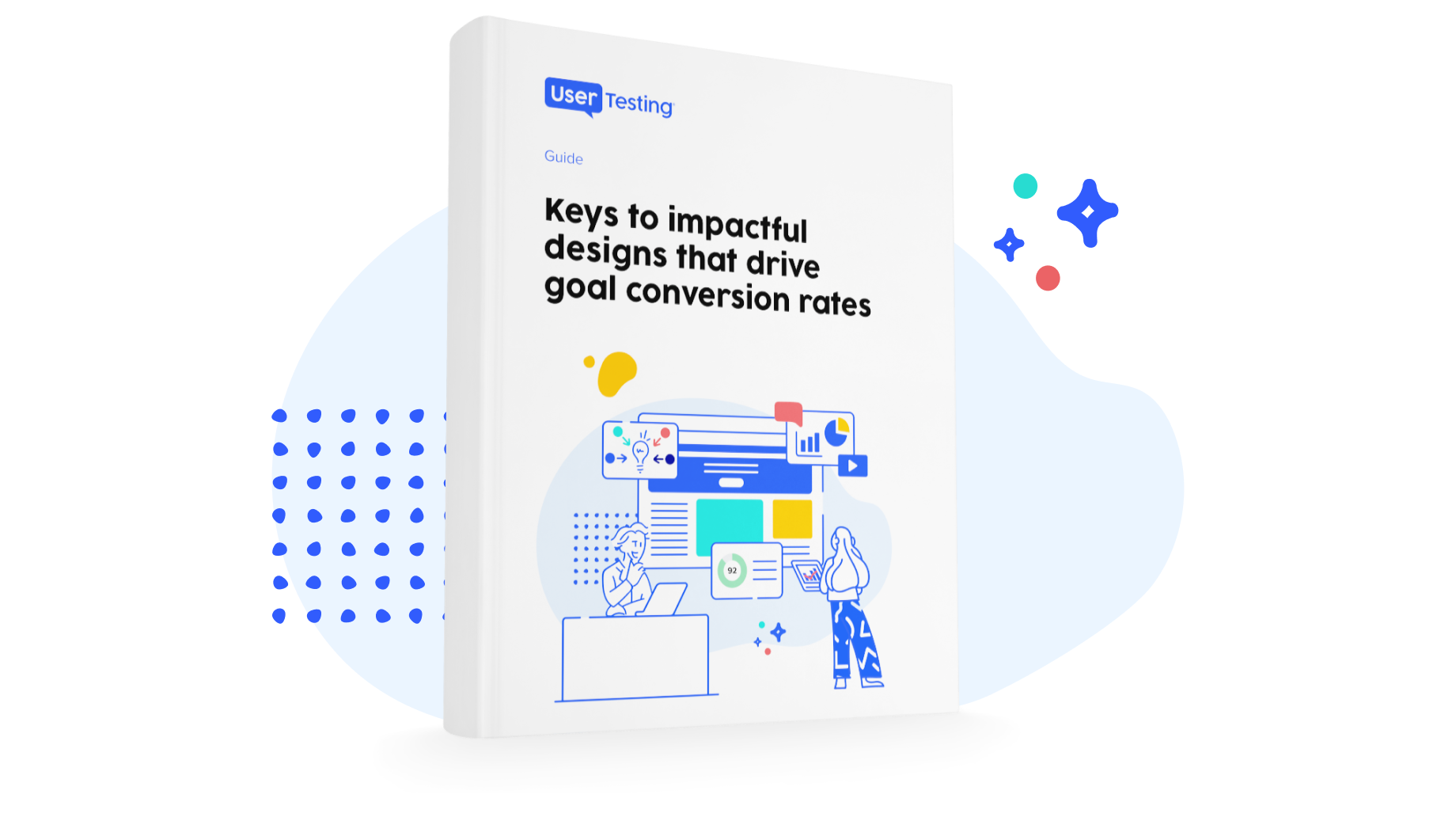
What is UX design? 15 user experience design experts weigh in

What is UX design?
It’s important to start by saying there’s no commonly accepted definition for UX design.
User experience design is a concept that has many dimensions, and it includes a bunch of different disciplines—such as interaction design, information architecture, visual design, usability, and human-computer interaction.
But let’s try to get a clearer picture of what that really means.
The definition of UX design
According to a study from the Oxford Journal Interacting With Computers:
The goal of UX design in business is to “improve customer satisfaction and loyalty through the utility, ease of use, and pleasure provided in the interaction with a product.”
In other words, UX design is the process of designing (digital or physical) products that are useful, easy to use, and delightful to interact with. It’s about enhancing the experience that people have while interacting with your product, and making sure they find value in what you’re providing.
But unfortunately, that isn’t a comprehensive explanation of UX design either. So to help you get a better understanding of what it really is, we reached out to 15 thought leaders in the space and asked them:
What is UX design?
Said differently: “How would you describe UX design to someone who was learning about it for the first time?”
Here’s what they had to say:
- Laura Klein, Principal at Users Know
- John Amir-Abbassi, User Experience Researcher at Facebook
- Jason Ogle, Founder, and host of the User Defenders podcast
- Justin Mifsud, Founder of Usability Geek
- Steve Krug, Usability Consultant
- Martyn Reding, Head of Digital Experience at Virgin Atlantic
- Tomer Sharon, Head of User Research and Metrics at Goldman Sachs
- Marieke McCloskey, Director of Research, Product at UserTesting
- Steve Portigal, Principal at Portigal Consulting
- Paul Boag, UX Consultant of Boagworks
- Joshua Porter, Partner at Rocket Insights
- Scott Johnsen, Head of Design at UserTesting
- Whitney Hess, Founder and Executive Coach at Vicarious Partners
- Cory Lebson, UX Research Consultant
- Reed Jones, Sr. User Experience Researcher at Autodesk
On-Demand Webinar
Increasing customer satisfaction: turning customer insights into action
1. UX design is the process used to determine what the experience will be like when a user interacts with your product

Laura Klein, Principal at Users Know, Author of UX for Lean Startups and Build Better Products
“If UX is the experience that a user has while interacting with your product, then UX Design is, by definition, the process by which we determine what that experience will be.
UX Design always happens. Whether it’s intentional or not, somebody makes the decisions about how the human and the product will interact. Good UX Design happens when we make these decisions in a way that understands and fulfills the needs of both our users and our business.”
2. User experience design is an approach to design that takes the user into account

John Amir-Abbassi, User Experience Researcher at Facebook
“Your question is simple, the answer is a little complicated, and it sometimes can be controversial.
User Experience Design is an approach to design that takes into account all the aspects of a product or service with the user. That includes not only the beauty and function: (usability and accessibility) of a product or a flow, but also things like delight, and emotion—things that are harder to engineer and achieve.
While a designer can create a toggle, a flow, or an interaction that is beautiful, unique, sexy, and functional in a flow—UXD extends into all the disciplines that come together to make the user experience as a whole great.
Yes, you have interaction designers, but you also have content strategists, information architects, user researchers, engineers, and product managers—all of whom have a shared responsibility to create an experience that is easy to use, and leaves users pleased because it is adding value to them.”
3. UX design is about solving problems through empathy

Jason Ogle, Founder and host of the User Defenders podcast
“UX Design is an empathically-driven practice crafted to solve human and business problems, and remove obstacles and friction from a user’s desired goals—hopefully delivering delight in the process.”
4. User Experience Design is a process for designing systems that offer a great experience to users

Justin Mifsud, Founder of Usability Geek
“User Experience Design (UXD or UED) is a design process whose sole objective is to design a system that offers a great experience to its users. Thus UXD embraces the theories of a number of disciplines such as user interface design, usability, accessibility, information architecture, and Human Computer Interaction.
User Experience Design is practiced by User Experience Designers—who are particularly concerned with the interaction that occurs between users and the system they are using.
So, for example, a UX designer would take the principles that state how to make a product accessible, and actually embody those principles in the design process of a system so that a user that is interacting with it would find it as being accessible.”
5. UX is improving how useful, easy, pleasant, marketable, or addictive it is to use a product

Steve Krug, Usability Consultant, Author of Don’t Make Me Think and Rocket Surgery Made Easy
“In 100 words? Yikes! (There go four of them already. Oops. Make that ten.) Here goes: The deliberately squishy term “User Experience” encompasses UX Research (figuring out how people perceive and interact with a product, system, or service) and UX design (improving or manipulating how useful/easy/pleasant/marketable/addictive it is to use it). UX descended from Ergonomics, User Centered Design, and Usability/Information Architecture until in the wake of the success of the iPhone it morphed into the current 46 subspecialties and flavors du jour. From its noble heritage of advocacy for the user (“improving the user’s experience”), it has displayed an alarming tendency to lean towards advocacy for the producer (maximizing usage/sales/addiction). [Sorry for turning dark there at the end.]”
6. User experience design is the fulfillment of a brand’s promise

Martyn Reding, Head of Digital Experience at Virgin Atlantic
“User experience design is the culmination of content, research, design and strategy and its effect on the delivery, selling and use of a digital product or service. In many instances, a user experience happens by the incidental smashing together of code and assumptions about people, so I think the distinction is in brands that recognize the value of a carefully crafted digital experience. In many ways, it is the fulfillment of a brand’s promise and recognition that how customers’ feel has a huge commercial impact.”
7. UX design is the art and science of generating positive emotions through product interactions

Tomer Sharon, Managing Director, Head of User Research and Metrics at Goldman Sachs, Author of Validating Product Ideas through Lean User Research
“UX design is the art and science of generating positive emotions among people who interact with products or services.”
8. UX design is a commitment to building products with the customer in mind

Marieke McCloskey, UX Researcher, Product Strategist, and speaker
“UX design is a commitment to building products that are created with the customer in mind. It starts with studying who the customers are and what they need and taking that information to provide products and services that improve the quality of people’s lives.
Design ideas are validated through real customer feedback and iterated on to ensure the final product will work well for those that will be using it.”
9. UX design is the creative and analytical process of determining what a website, device, or piece of software is going to be

Steve Portigal, Principal at Portigal Consulting, Author of Doorbells, Danger and Dead Batteries and Interviewing Users
“If we look at an interactive thing like a website or a device or a piece of software, designing the user experience for that thing is the creative and analytical process of determining what it’s going to be—what it’s going to do for people, how they’ll use it, and what it looks/sounds/feels/smells/tastes like.”
10. UX design is so much more than just designing for a screen

Paul Boag, UX Consultant of Boagworks, Author of User Experience Revolution
“For me UX design is so much more than just designing for a screen. The user experience is impacted by decisions made across an organization from the boardroom to the way a developer codes for performance.
Take for example the new Disney Magicband. This doesn’t have a graphic user interface and yet creates an amazing experience using sensors and well-implemented customer service.”
11. UX design is design with an awareness of every touchpoint that makes up the overall experience with your product or service

Joshua Porter, Partner at Rocket Insights
“UX Design is simply design with an awareness of all the touchpoints that comprise the overall experience with your product/service. So it goes beyond screen and visual design to things like email correspondence, the way people answer phones, marketing messages, return policies, release notes, and everything in between.
It is critical to focus on the entire experience in the Internet Age because it is likely you will never meet many of your customers face-to-face. Eventually, though, the letters “UX” will fade away and it will be understood that all of these things are part of designing any product or service.”
12. UX design is a process of deeply understanding the user's needs and objectives

Scott Johnsen, Head of Design at Alto
"UX Design is the purposeful application of logic and rationale for creating experiences that offer both utility and value to the end user. It's a process of deeply understanding the user's needs and objectives, identifying where their greatest problems exist, and working generatively to ideate ways to solve these problems. Rarely centered on the creation of a single screen, UX Design is instead the intentional act of crafting countless interactions that span the entire user journey within a given product experience while also adhering to brand, design and usability standards."
13. User experience is a commitment to developing products and services with purpose, compassion, and integrity

Whitney Hess, Founder and Executive Coach at Vicarious Partners
“User Experience is a commitment to developing products and services with purpose, compassion, and integrity. It is the never-ending process of seeing the world from the customers’ perspective and working to improve the quality of their lives.
It is the never-ending process of maintaining the health of the business and finding new ways to help it grow sustainably. It is the perfect balance between making money and making meaning.”
(Note: If you want to read more about Whitney’s take on user experience, check out this article.)
14. It’s the practice of meeting people’s needs before, during, and after product development

Cory Lebson, UX Research Consultant, Author of The UX Careers Handbook
While I understand you’re targeting the big picture, as a user researcher I think of UX *design* specifically as interaction design, a piece of the UX pie along with a whole host of other UX skill sets, some which are fully design-oriented and some which are not. I’ve been in more than one situation where people referred to me as a UX designer who does research. Of course, there are people who are UX designers that do research, but not me. My UX identity is simply that of a plain old researcher. As such, I fall into another piece of the UX pie—intimately connected with UX design—but still only parallel.”
15. UX design is about delighting users by anticipating their needs and giving them something they didn’t think to ask for

Reed Jones, Sr. User Experience Researcher at Autodesk
“Many people state that experience cannot be designed because experiences are something people have—not something that can be designed. On one hand, I completely agree.
On the other hand, UX enables us to identify what makes a good experience versus a bad one. And when done well, the designed elements of an experience become invisible and the user is delighted because we have anticipated their needs to give them something they don’t think to ask for.”

Create designs that drive goal conversions
Learn how to strategically optimize goal conversion rates by predicting the impact of design choices—before development begins.





